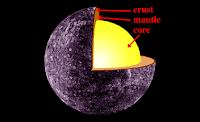
I hope you are enjoying your spring break but like so many spring breaks in Oregon, the clouds are what you see when you look toward the night sky. But it won't last for long. So I thought I'd take a moment and talk about the constellations.
In my last post on the Big Dipper, part of Ursa Major or the Great Bear, I pointed out what to look for when you do get to see it.
There is a story for every constellation in the sky. Before we had access to all of the information we now get from television and computers, ancient people (much older than me) told stories, watched the skies for changes in the seasons and marked their lives with the passing of these star formations in the night sky.
Here are just a couple of reasons why these stars were so important. In ancient times, when the months were the annual calendar, people studied astronomy to help them know when to plant and when to harvest. They knew when the rivers were likely to overflow...the Egyptians noted that the cycles of the Dog Star, Sirius, coincided with the rise and fall of the Nile River. They could accurately predict the Nile floods using just the stars in the sky!
Some of the Native American cultures here in North American had a different story. They noted that when the Big Dipper...they could see Ursa Major, the Great Bear...dipped low in the western sky, the leaves of the trees would turn red. Fall was here.
The story goes that three hunters were trailing the bear. The hunters were the three stars that we see as the handle of the Big Dipper. One of the hunters had shot the bear in the side, but the wound wasn't serious enough to stop the bear. The middle hunter carried a pot on his shoulder to cook the bear meat in, but the hunters never got close enough to kill the bear. He went crashing through the forests of the night, always managing to keep the same distance ahead of the three hunters. At the end of summer, the bear and the hunters grew tired, and they dipped lower and lower toward the horizon. When the bear got very close to the horizon, close enough for blood to drip from the wound in his side onto the trees, the people noticed that the leaves turned red. It was time to harvest and finish preparation for winter.

In ancient Greece, the people who lived there believed in a number of different gods that looked over them and, according to the stories, had regular lives with ups and downs, loves and fights, kids and occasionally, battles. The chief god was Zeus.
The story about the Big Dipper goes something like this: Zeus fell in love with Callisto, daughter of Lycaon and by her had a son, Arcas. In order to spare Callisto from the wrath of Hera (this was Zeus' wife - even the gods weren't perfect), Zeus changed her into a bear to hide her identity.















